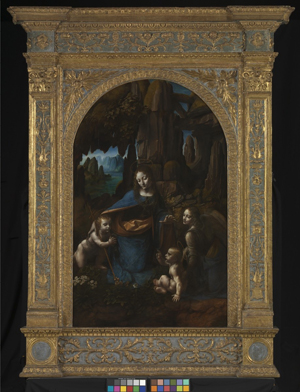
LONDON – Fakes and forgeries are always with us, and probably always have been. However, with prices rising in the art market as never before, the need to establish a work’s authenticity is becoming ever more critical, particularly since the rising art market is encouraging fakers and forgers to intensify their activities.
One of the most interesting problem pictures currently occupying connoisseurs, scholars, auction houses, and even one or two lawyers, is a drawing on vellum, a profile portrait of a young woman. It was sold at Christie’s in New York in 1998 as a work by a minor nineteenth-century German painter. Not long afterwards it was heralded by its new owner as an autograph work by the Italian Renaissance master Leonardo da Vinci.
Professor Martin Kemp of Oxford University, one of the world’s leading Leonardo scholars, is so convinced that the work is a genuine Leonardo that he has written an entire book on the subject. However, for every believer, there are numerous skeptics and so far not even scientific forensic fingerprint analysis on the picture has been enough to convince the doubters. When it sold at auction in 1998, the drawing made $21,850; were it to be accepted as a real Leonardo, it is said that it could be worth up to $150 million.
Happily, no such question marks surround Leonardo’s magisterial Virgin of the Rocks, which has been one of the most popular works in the collection of the London National Gallery since its acquisition in 1888. This week the painting was placed back on public display following 18 months of restoration and conservation, which shed fresh light on the painting’s genesis.
Looking resplendent in a new frame that incorporates parts of an original north Italian frame of about 1500, the picture has taken on a new significance for Leonardo scholars and for the general public, who can now enjoy its greater tonal subtlety as well as benefit from illuminating insights into how Leonardo painted it. Most importantly, perhaps, it now seems likely that the artist executed most of it himself, rather than delegating it to assistants, which was by no means unusual. This is all testament to the diligent work of the National Gallery’s restoration and conservation department, headed up by Larry Keith.
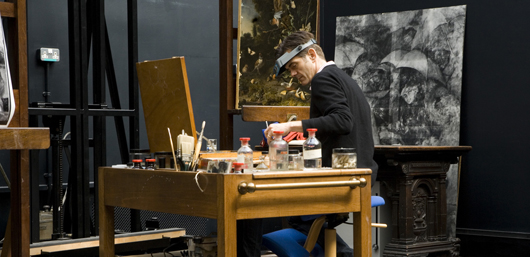
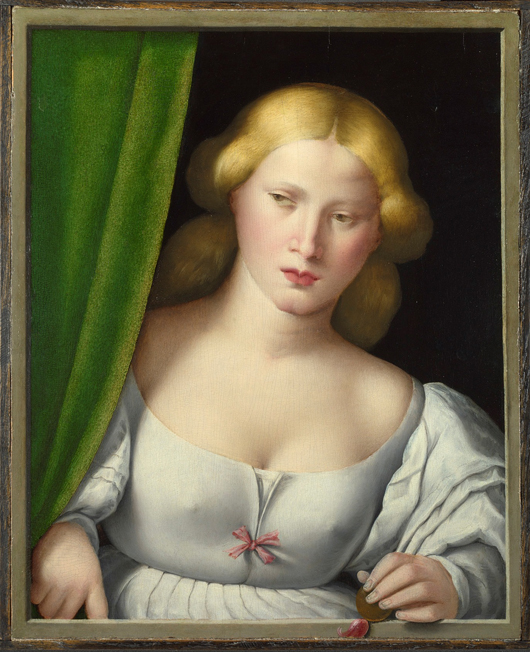
There was a time when it would have been sacrilege to even whisper the words fake or forgery within the hallowed portals of our national museums and galleries. However, museums today are rather more enlightened than in times gone by and many curators now recognize the public’s fascination with fakes, forgeries and the mysterious arts of connoisseurship that can establish whether a work is right or wrong.
Thus while some visitors to the National Gallery this week have been gazing lovingly at Leonardo’s newly restored Virgin of the Rocks, just as many will have been perusing the gallery’s other current exhibition: ‘Close Examination: Fakes, Mistakes and Discoveries’ (until 12th September).
The question of fakes and forgeries is of obvious concern to the art and antiques trade and doubtless some dealers have already pressed their noses to the exhibits on view at the National Gallery. Of course, few dealers or auctioneers have the facilities (or confidence) to undertake the sort of interventions into a picture’s surface that are sometimes required in order to establish its authenticity. The National Gallery, however, was able to discover through precisely those processes that underneath their straight-laced painting of a woman looking through a window, was a more daring depiction of an altogether more comely maiden. Evidently a Victorian ‘restorer’ may have adapted this Italian Renaissance beauty, changing her from blonde to brunette, and tweaking her too-revealing bodice, his brush seemingly guided by the prevailing morals of the age.
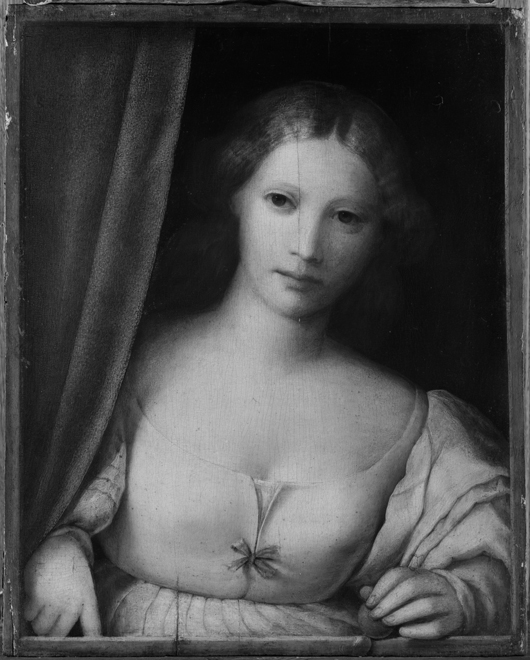
Of course, not every ‘wrong’ work is an act of deception. Some paintings by followers of earlier masters are only later misattributed to the master himself. This may have been the case with the National Gallery’s An Old Man in an Armchair by a follower of Rembrandt, also in the current exhibition.
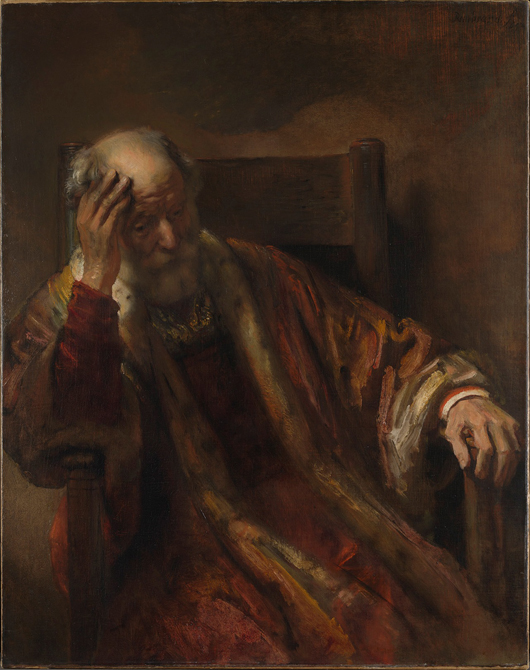
Rembrandt is, of course, a major draw to one of the UK’s oldest public galleries, the Dulwich Picture Gallery in South East London, where his Girl at a Window (1645) resides alongside other important works by the likes of Poussin, Gainsborough, Rubens, Canaletto and Van Dyck. The Gallery is now poised for a significant new facelift, which will restore its elegant front entrance to its proper function and lend a contemporary note to the building. That contemporary touch will be complemented by the display of a new work by leading British sculptor Peter Randall-Page entitled Walking the Dog, I, II, III, influenced by Sir John Soane’s ‘running dog’ pattern visible on the external walls of the Gallery. It will be the first sculpture to be included in the Dulwich Picture Gallery’s permanent collection.
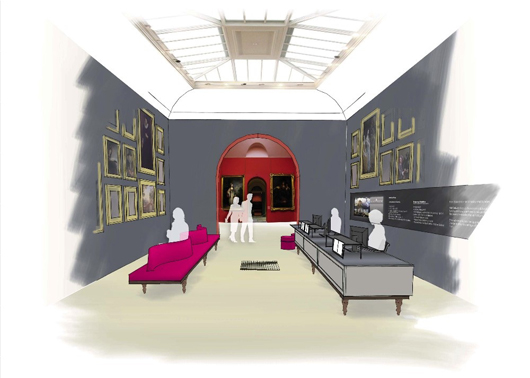
Staying on the contemporary theme, The Fleming Collection, which many see as the spiritual home of Scottish art in London, is currently showing its first selling exhibition, ‘The Best of Scottish Contemporary Art’ at its 13 Berkeley Street premises in London W1 until 4th September.
The show comprises around 100 works by emerging artists as well as more established names already represented in the Fleming Collection, which has been acquiring works by contemporary Scottish artists for many years. If the show is well-received, the idea is to make it an annual event. All works are for sale, priced at a few hundred pounds upwards, and a percentage of the proceeds will go back into the Foundation.
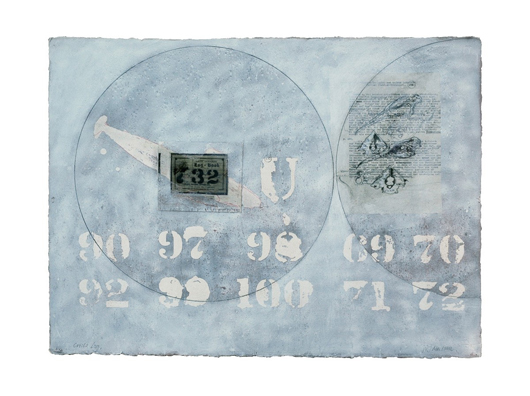
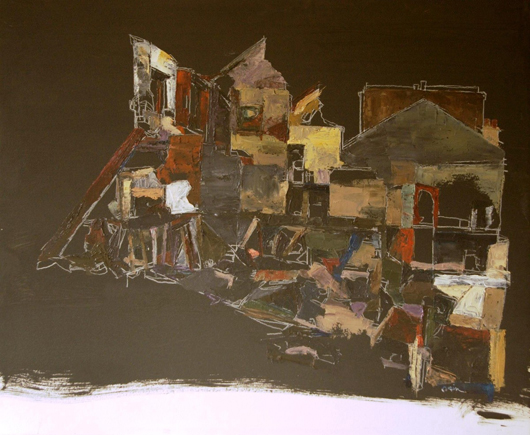
Finally, a couple of extraordinary stories have emerged from the Salisbury salerooms of Woolley & Wallis, one of which casts intriguing light on how some works of art come into being. The firm’s next silver sale on July 21st includes a pair of eighteenth-century silver candelabra reputed to have been cast from melted-down ‘pieces of eight’ looted from Spanish treasure vessels by two British privateers patrolling the North Atlantic in the 1740s. They bear the crest of Murray, 1st Earl of Mansfield. Whether this represents an early form of money-laundering is a moot point (the maritime plunder was valued at £800,000, a tidy sum in 1745).
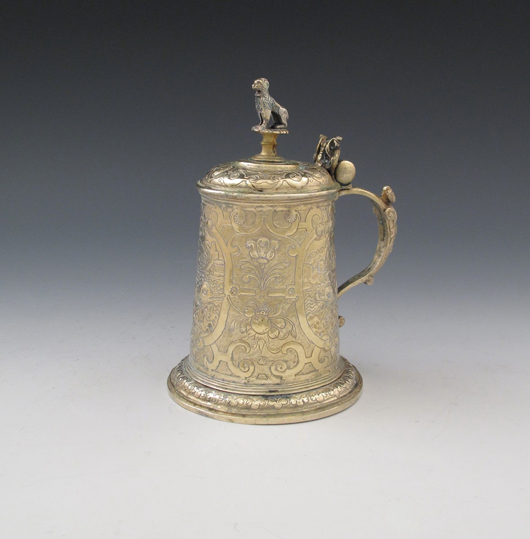
Another fascinating lot at the Salisbury sale is a fine seventeenth-century silver-gilt tankard, one of a number of items discovered behind a cellar wall when a house was being demolished in Germany in 1967. It is thought that the items may have been stashed away during the Thirty Years War (1618-1648). Quite a find for the lucky builder who wielded the pickaxe, the tankard is expected to make £4,000-6,000 ($6,125-9,200) when it comes under the hammer on July 21st.
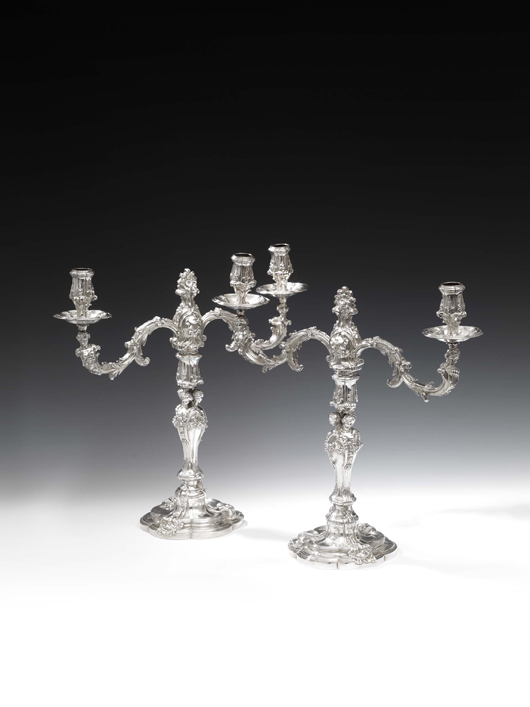
Tom Flynn is a London-based writer and journalist. His monograph on British sculptor Sean Henry was published by Scala.


